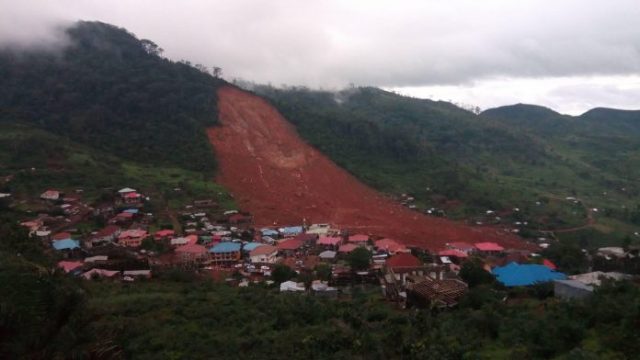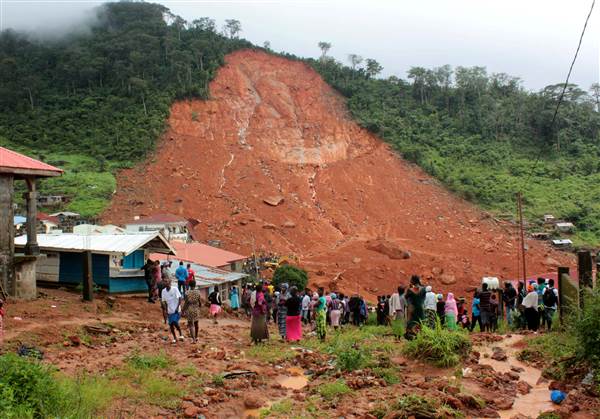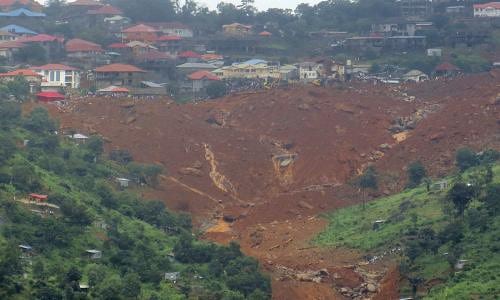15 August 2017
Regent landslide, Sierra Leone: an uncertain picture
Posted by Dave Petley
Regent landslide, Sierra Leone: an uncertain picture
There is widespread, front page reporting this morning of the Regent landslide tragedy in Sierra Leone. This is without doubt the biggest event (so far) in a bad year for landslide accidents worldwide; sadly, with some months of the main global landslide season to run the losses will continue to mount. The Sierra Leone tragedy was triggered by heavy rainfall, with the main event appearing to be a large landslide in the Regent area, on the margins of the city of Freetown. The best image that I have found that provides an overview of the Regent landslide is this one, from Switsalone:-

Overview of the Regent landslide in Sierra Leone. Image via Switsalone.
.
This is a large slide, but for a slide of this size to kill so many (estimates of the death toll are currently around 400, with at least another 300, and possibly 1500, still missing) is unusual and a little perplexing. The landslide appears to be in deeply weathered soil (typical of this area), with the slide occurring on the boundary between bedrock and weather material, based on this image from NBC / Reuters:

The Regent landslide scar, via NBC / Reuters / Ernest Henry.
.
Even with densely packed housing at the foot of the slope, this level of loss seems surprising to me. I wonder if the images are not capturing a high mobility component of the landslide, similar to Oso? This image, via the Guardian, is intriguing, but I cannot find an explanation for it:-

An alternative view of the Regent landslide. Image via the Guardian
.
On the face of it this appears to be a different landslide. But perhaps it is the lower portion of the main Regent landslide, showing evidence of very high mobility and, crucially, the transition into a channelised flow. This would account for the videos of high mobility flows downstream (and reports of bodies being found in the sea), and it would explain how the losses have reached such terrible numbers.
This is of course speculation at the moment, but my sense is that if lessons are to be learnt we need to piece together the dynamics of this disaster properly.


 Dave Petley is the Vice-Chancellor of the University of Hull in the United Kingdom. His blog provides commentary and analysis of landslide events occurring worldwide, including the landslides themselves, latest research, and conferences and meetings.
Dave Petley is the Vice-Chancellor of the University of Hull in the United Kingdom. His blog provides commentary and analysis of landslide events occurring worldwide, including the landslides themselves, latest research, and conferences and meetings.
ministry of land need to get professionals with proper planning of Freetown, most especially for those who dwell or plan to dwell on top of mountains, by plotting and using contour road network around the mountains with solid retaining wall concrete, and type of structure to build on this mountains, Leicester peak has a contour road net work, but it is not retained by solid concrete to prevent from land slide as there are symptom of Land slide at Leicester peak as you are moving along the contour road to Leicester peak, giant stones small mudslide you can detect while moving up. just a concern. for future occurrence hint to a wise is quiet sufficient, power and authority,partism is not all, but concern for the poor masses and nation as whole. sierra Leonean Leaders. must have a vision, focus and sense of direction for the future goal of this country.